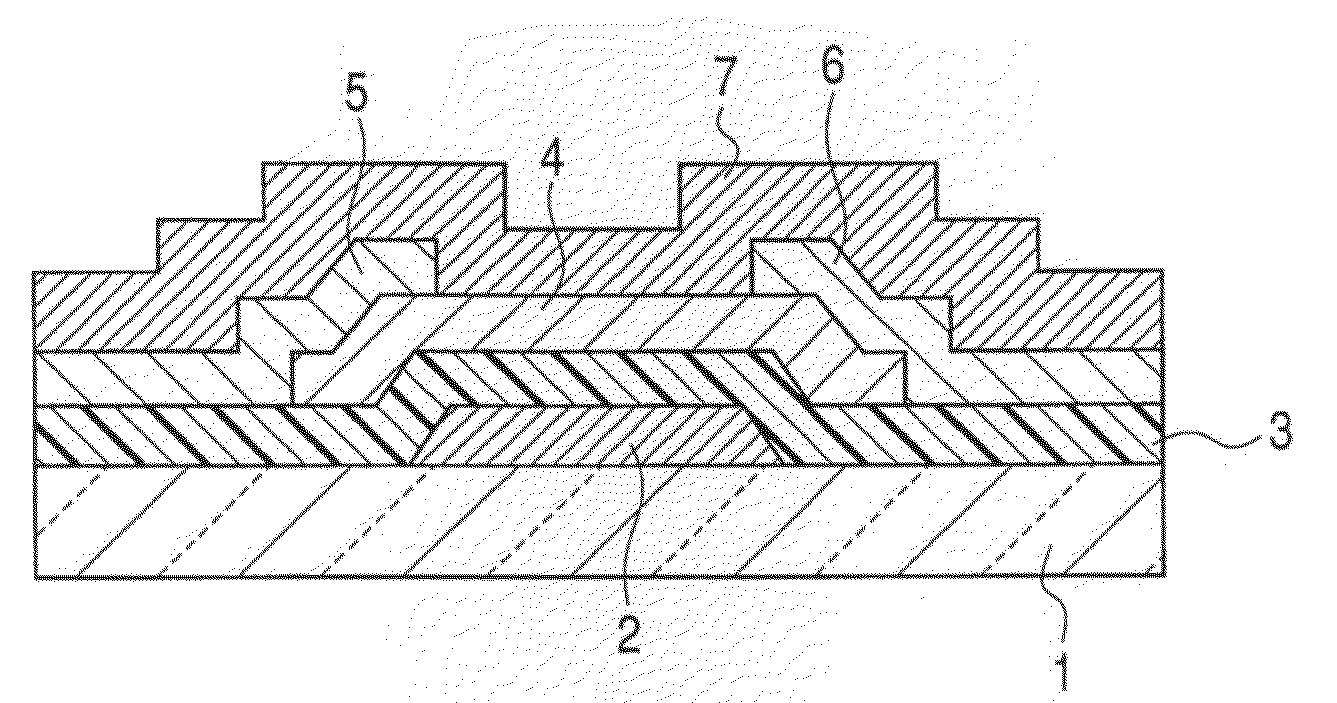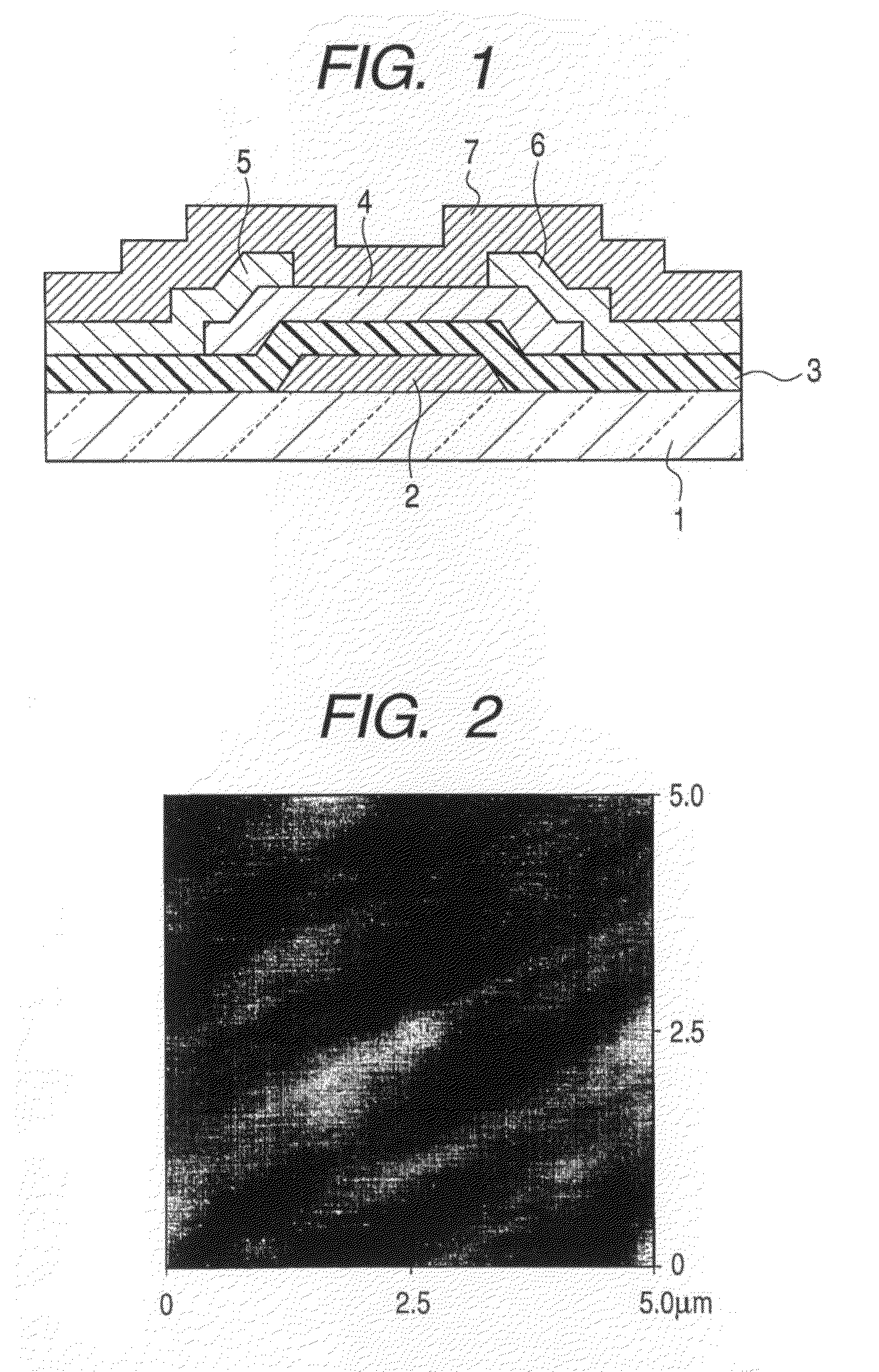Thin-film transistor and process for its fabrication
a thin film transistor and fabrication process technology, applied in the direction of transistors, semiconductor devices, electrical devices, etc., can solve the problems of reducing electron mobility, increasing the effective channel length, increasing the interface trap level, etc., and achieving the effect of preventing deterioration of its characteristics
- Summary
- Abstract
- Description
- Claims
- Application Information
AI Technical Summary
Benefits of technology
Problems solved by technology
Method used
Image
Examples
example 1
[0049]This Example is an example in which the bottom gate type thin-film transistor shown in FIG. 1 is fabricated. In the thin-film transistor shown in FIG. 1, the layers are formed on the substrate 1 in order. Stated more specifically, the gate electrode 2, the gate insulating layer 3, the semiconductor layer 4, the source electrode 5 / drain electrode 6 and the protective layer 7 are formed on the substrate 1 in this order.
[0050]A glass substrate (1737, available from Corning Glass Works) was used as the substrate 1. The glass substrate was 0.5 mm in thickness.
[0051]First, an amorphous conductive oxide layer was formed on the substrate 1. In this Example, an amorphous ITO thin film was formed by RF magnetron sputtering in an atmosphere of a mixed gas of argon gas and oxygen gas. The ratio of In:Sn was 91:9. In this Example, a polycrystalline sintered body of 3 inches in size was used as a target (material source), and applied RF power was 100 W. The atmosphere at the time of film fo...
example 2
[0070]This Example is an example in which the bottom gate type thin-film transistor shown in FIG. 1 is fabricated. In the thin-film transistor shown in FIG. 1, the layers are formed on the substrate 1 in order. Stated more specifically, the gate electrode 2, the gate insulating layer 3, the semiconductor layer 4, the source electrode 5 / drain electrode 6 and the protective layer 7 are formed on the substrate 1 in this order.
[0071]A glass substrate (1737, available from Corning Glass Works) was used as the substrate 1. The glass substrate is 0.5 mm in thickness.
[0072]First, a polycrystalline ITO thin film was formed on the substrate 1. In this Example, the polycrystalline ITO thin film was formed by RF magnetron sputtering in an atmosphere of a mixed gas of argon gas and oxygen gas.
[0073]The ITO thin film thus formed was observed by XRD to obtain the result shown in FIG. 6. Clear diffraction peaks showing a crystalline state were seen, to find that the ITO thin film obtained was in a ...
PUM
 Login to View More
Login to View More Abstract
Description
Claims
Application Information
 Login to View More
Login to View More - R&D
- Intellectual Property
- Life Sciences
- Materials
- Tech Scout
- Unparalleled Data Quality
- Higher Quality Content
- 60% Fewer Hallucinations
Browse by: Latest US Patents, China's latest patents, Technical Efficacy Thesaurus, Application Domain, Technology Topic, Popular Technical Reports.
© 2025 PatSnap. All rights reserved.Legal|Privacy policy|Modern Slavery Act Transparency Statement|Sitemap|About US| Contact US: help@patsnap.com



